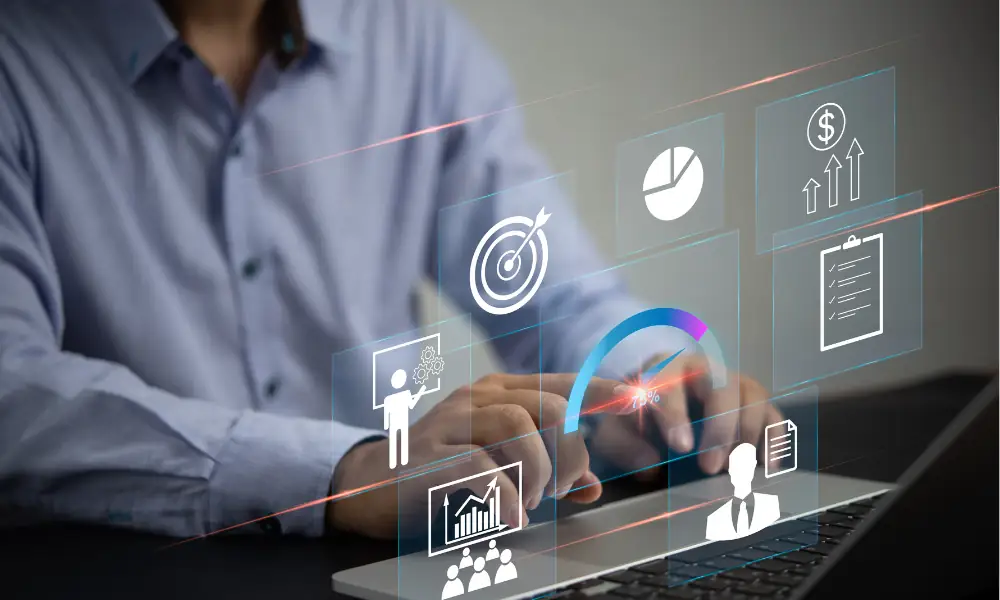In the world of education, the digitalization of information enhances productivity and communication in colleges. Learning Management Systems (LMS) and Student Information Systems (SIS) have emerged as essential tools to streamline overall workflow and increase the performance of tertiary institutions. By effectively integrating LMS and SIS, colleges can reduce unnecessary delays and strengthen their outputs whilst making for better teacher-student interactions. This is reshaping the traditional methods of manually entering and storing data in a virtual space. Now, institutions can gain a competitive edge and improve their performance.
What are LMS and SIS
A Learning Management System (LMS) is a digital platform that is fashioned to coordinate and channel the delivery of educational content. It is seen as the primal hub by which students can access course materials, participate in forums, and share valuable resources with colleagues. A Student Information System (SIS), on the other hand, is a comprehensive database that is used to store student information and manage admin tasks. It comes in handy for support staff to undertake tasks like enrollment, attendance tracking, and academic record-keeping. The SIS market is projected to grow by 20.3% between 2023 and 2030, proving its efficiency. While these systems serve different purposes, their integration can be used as a transformative tool for collages.

Integrating LMS and SIS for a Better Workflow
Colleges can obtain an improved workflow by integrating LMS and SIS in their day-to-day workings. The convergence of both systems into a single all-in-one software creates an exchange of information between educators, students, and administrators. This enhances the overall teaching and learning as well as improves the net functioning of the institution. Here are some positive impacts from the integration of both systems:
1. Accuracy of data input: Errors can be minimized by eliminating the need for manual data capture across physical databases. Information regarding student achievements, enrollment, progress, and other updates can be effortlessly synchronized to their digital profiles.
2. Improved student performance: As a result of educators and administrators managing student progress through LMS and SIS, weak points can be identified, and appropriate feedback can be provided. This will, in turn, encourage students to put more effort into more vulnerable areas of their studies and improve their understanding.
3. Better decision-making: By combining the use of LMS and SIS, valuable insights can be extracted regarding the institution’s performance. Educators and administrators can recognize trends and patterns and employ better decision-making to improve the overall standards of the college.
4. Cloud storage: A trusted integrated system with suitable cyber security measures such as encryptions and authentication protocols ensures that the centralized data can be accessed remotely. This is very useful for institutions with numerous campuses or collaborative programs to guarantee easy access to LMS and SIS anywhere.
5. The ability to scale: An integrated system promotes scalability by providing digital solutions for an institution’s ever-changing needs and size. By channeling workflow, reducing errors, and making informed decisions, the institution is allowed to scale its operations without severe overhead costs.
Requirements for Integrating LMS and SIS
Integrating LMS and SIS involves several crucial requirements. A comprehensive understanding of the data flow between the two systems is essential. This entails data mapping to identify and synchronize information such as student details, course information, and grades. The implementation of reliable middleware is key for establishing seamless communication channels, allowing for real-time or scheduled data transfers. Ensuring user authentication through a single sign-on (SSO) mechanism enhances security and user experience. Security measures, including encryption and compliance with data protection regulations, are paramount to safeguarding the transferred information. Ongoing support mechanisms and regular monitoring further ensure the sustained efficiency and reliability of the integrated LMS and SIS.
Challenges of Integration
LMS and SIS are both intricate systems. Hence, their integration poses several challenges that educational institutions must navigate. A critical hurdle is ensuring accurate and real-time data synchronization between the LMS and SIS, encompassing student enrollment details, grades, and course information. Compatibility issues may arise due to different platforms or technologies these systems use. Establishing a seamless user authentication process is essential for secure access with a single set of credentials. Adequate training is another challenge affecting these two systems’ integration. To reap the benefits of LMS and SIS, administrative staff and educators need proper training on how to use methods effectively and efficiently. The integration process between LMS and SIS may incur additional expenses. These may be related to software modifications, ensuring compatibility, and acquiring other hardware if necessary. Educational institutions must budget for potential customization needs to align with their specific requirements. Financial constraints may prevent institutions from creating a properly integrated system. Additional challenges include data security and privacy, aligning workflows, and designing for scalability.
Overcoming these challenges requires meticulous planning and collaboration. Investing in comprehensive user training programs and allocating sufficient resources can ensure successful integration. Additionally, close collaboration with stakeholders and continuous communication can address customization needs, data security concerns, and compatibility issues, fostering a seamless and effective educational ecosystem.
Conclusion
As colleges navigate the challenges posed by the digital era, the integration of LMS and SIS offers a robust tool to not only simplify processes but redefine teaching. The precision of data input, the ability to tailor content, and the insights from student assessment show the positive impact of this combination. However, this perfect match isn’t without its challenges. Compatibility hurdles, data synchronization, and inefficient funding for training and resources are critical in deciding the effectiveness of the integration. Overcoming these challenges involves strategic planning, comprehensive training, and stakeholder collaboration.
Integrating LMS and SIS isn’t just a systems merger. It is a leap toward enhancing the very foundations of learning institutions, fostering a future where education seamlessly converges with technology for unparalleled success.
FAQ’s
LMS are digital platforms for delivering educational content and facilitating student-teacher interactions, while SIS are comprehensive databases used for student information management and administrative tasks such as enrollment and attendance tracking.
Integrating LMS and SIS can streamline workflows, improve data accuracy, enhance student performance, enable better decision-making, provide cloud storage, and promote scalability for colleges.
Classter provides comprehensive training, reliable middleware solutions, user authentication mechanisms, data security measures, ongoing support, and customization options tailored to the specific integration requirements of colleges.

